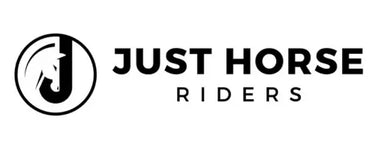Rethinking Ulcer Prevention: The Case for Daytime Forage Feeding for Horses
Gastric ulcers present a significant health complication in horses, a concern directly linked to their dietary practices and management strategies. Recent insights emphasize the role of forage, especially when fed during daylight hours, in ulcer prevention. This innovative method, recognized as "daytime forage bias," advocates for daytime forage feeding as a strategy to notably diminish the risk of gastric ulcers in equines. Join us as we delve into the scientific rationale behind this method and its implementation for improved equine well-being.

Understanding Gastric Ulcers in Horses
Gastric ulcers result from extended periods without food, leading to elevated stomach acidity. Horses have evolved to graze continuously, a behavior that sustains a steady stomach pH and offers protection against ulcers. Despite this evolution, today's domesticated horses often grapple with feeding regimens that deprive them of food for prolonged stretches, notably when stabled or with restricted pasture access.
The Role of Forage
Forage is pivotal in ulcer prevention, serving as a buffer to stomach acids. Horses that feed steadily throughout the day maintain a stable stomach environment, considerably decreasing the likelihood of ulcer development. Besides buffering, forage also triggers saliva production, providing another layer of protection to the stomach lining.

Daytime Forage Bias: A New Approach
The "daytime forage bias" proposes that 80% of a horse's daily forage should be consumed during daylight, generally from 7 AM to 7 PM. This strategy is based on studies indicating a heightened ulcer risk during the day if horses are deprived of food. Aligning feeding patterns with natural grazing habits ensures a continuous forage supply, fostering a healthy stomach pH and mitigating ulcer risk.
Implementing Daytime Forage Bias
To effectively implement this strategy, consider the following:
- Calculate Daily Forage Needs: Feed your horse 1.5% to 2% of its body weight in forage daily. For a 500 kg horse, this implies feeding 7.5 to 10 kg of forage.
- Select Appropriate Forage: Opt for high-fiber, low-sugar forages like alfalfa or timothy hay. Alfalfa notably aids due to its high calcium content.
- Use Slow Feeders: Employ slow feed hay nets to prolong eating time, ensuring the stomach remains filled.
- Adjust Feeding Schedules: Allocate 80% of daily forage during 7 AM to 7 PM, with the remaining 20% available overnight.

Additional Considerations for Ulcer Prevention
Beyond daytime forage bias, consider these factors in ulcer prevention:
- Limit High-Starch Meals: Minimize high-starch, high-sugar diets. Balance these meals with adequate forage to reduce ulcer risk.
- Exercise Management: Monitor exercise intensity and frequency to alleviate stomach stress.
- Continuous Forage Access: Ensure horses have access to forage to avoid drastic drops in stomach pH, ideally not leaving them without forage for over four hours.

Conclusion
The daytime forage bias presents an innovative, efficient method to lower gastric ulcer risk in horses. By aligning with natural grazing behaviors and ensuring a constant forage supply, horse owners can enhance their animal's digestive environment. Pairing this approach with diet and exercise management can dramatically bolster equine health. To explore horse supplements and feeding techniques, visit resources like Mad Barn for deeper insights and expert advice.
For a wide variety of high-quality horse riding apparel and equestrian supplies, don't miss the Just Horse Riders. Explore collections such as the Jodhpur Collection, Horse Riding Boot Collection, and other essential riding accessories.


